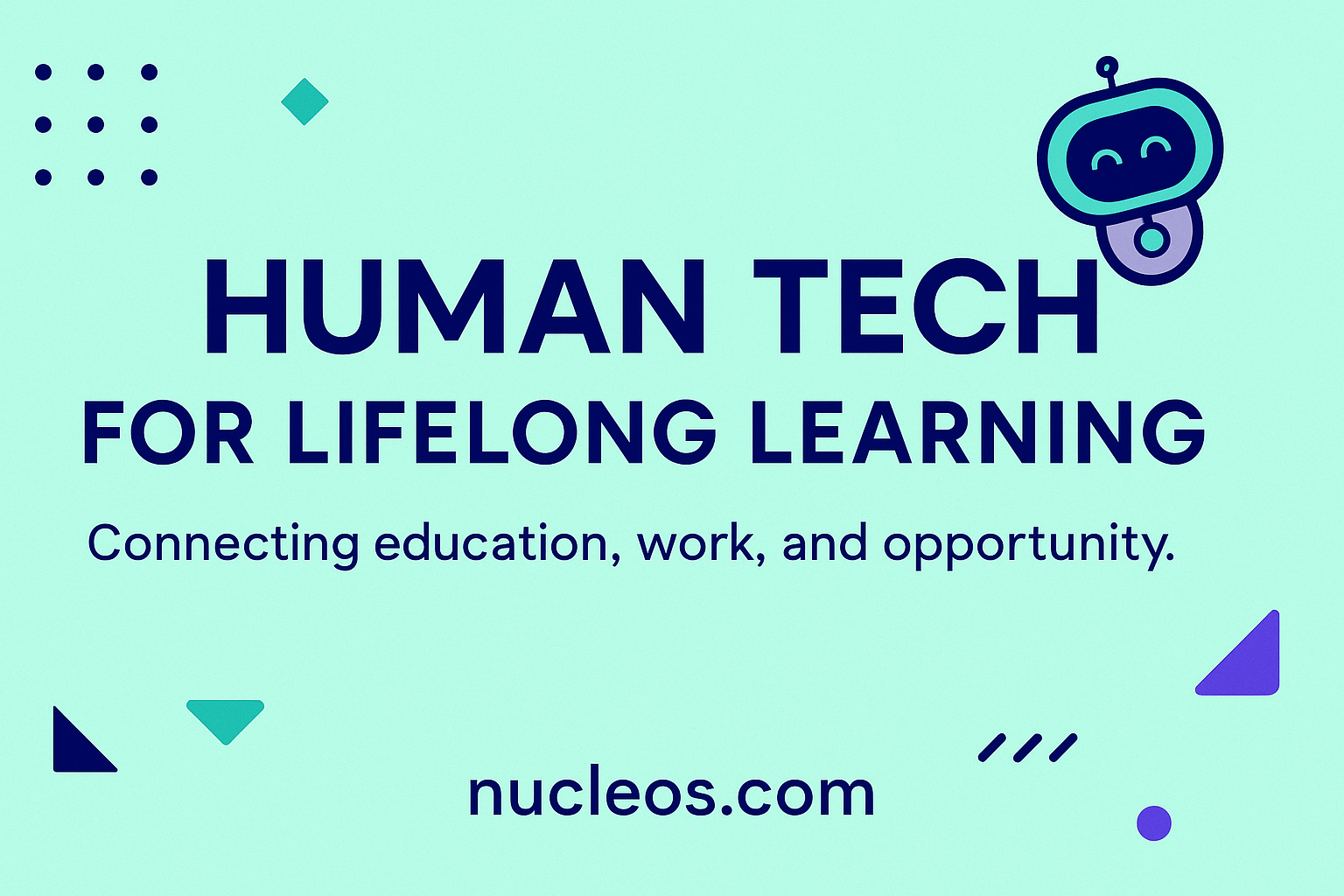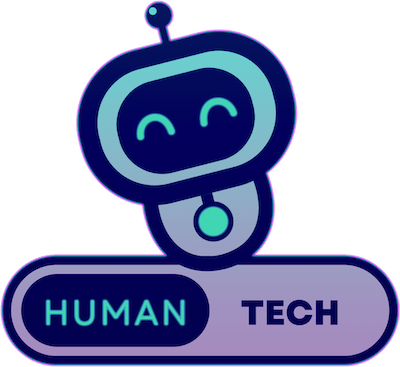Bridging Gaps: How Technology is Transforming Education for All


In an era of unprecedented technological advancement, the landscape of education and workforce development is undergoing a profound transformation. As we navigate these changes, it is more important than ever to ensure that everyone, regardless of their background or circumstances, has access to the tools, resources, and support they need to succeed. At Nucleos, our mission is to promote a more just society through education and training, and we believe that expanded education technology is a critical ingredient in unlocking this promise.
It is an exciting time to be working in education, as key trends are promoting expanded access and outcomes, opening up new possibilities for learners and educators alike. However, amidst these opportunities, there are also challenges that we must confront. From the digital divide to the need for more personalized learning experiences, educators, administrators, and government leaders have the opportunity to work together to ensure that the benefits of education technology are distributed fairly and effectively. This is particularly true in the context of workforce development and reentry, where access to quality education and training can mean the difference between a life of purpose and a life with more struggle and challenges.
In this article, we will explore some of the key trends shaping the future of education and workforce development in the United States, as well as the specific challenges and opportunities facing those in the reentry process.
These key trends include:
- Increasing education technology adoption
- Expansion of non-traditional learning pathways
- Emergence of AI as a new force in education which can support democratization though also presents some challenges
Education Technology Adoption
One of the most significant trends in education is the growing adoption of technology. According to a recent report, education technology adoption has expanded across the vast majority of grade school and colleges, with 89% of K-12 teachers reporting using education technology in their classroom in 2023, and more than 90% of universities offering at least one online course. The largest university by enrollment by some measures in the U.S. is currently Western Governors University, a fully online university focusing on non-traditional learners. Through partnership with Nucleos, this model also supports access to learners who have had more limited options, including for incarcerated learners.
For agencies providing education and training, complexity is only increasing. The number of technology tools used has been growing rapidly, with school districts reporting using an average of over 2,500 education technology tools in 2022, vs 300 in 2016. These trends are a testament to the increasingly digital landscape of learning. The trend of technological adoption in education mirrors the broader shifts in the workforce, where 92% of jobs now require digital skills.
The COVID-19 pandemic has further accelerated the adoption of education technology, as schools across the country pivoted to remote learning. However, this rapid shift has also brought to light the persistent challenges of access and equity. In the wake of the pandemic, attendance rates have reached record lows, with 26% of high school students chronically absent in 2023, compared to 15% in 2019. As schools and businesses alike grapple with the challenges of hybrid and remote learning models, it is clear that bridging the digital divide must be a top priority.
Access to connectivity remains a significant barrier to e-learning. This is particularly true in the context of correctional education programs, where lack of connectivity has hindered the expansion of educational opportunities. Our recommendations for prison education programs include supporting agency-owned education networks. Initiatives such as Pell Grant Restoration for incarcerated learners and the growing adoption of agency-financed technology deployments offer hope for a more connected and equitable future. In the U.S., 97% of people have Internet access. The same trend is mirrored globally. The number of people connected to the internet globally is higher than ever, 5.4 billion, or 67% of the global population, in 2024, up from 4.9 billion in 2022. Access to devices for U.S. students and simplifying e-learning complexity remain key challenges though, and there is still work to do to ensure that everyone can access the tools needed for success in today's world.
Growth of Non-Traditional Education
As education technology has expanded, we have seen a significant shift away from traditional, institution-focused learning models towards more disaggregated and personalized approaches. The greatest average returns in form of expected earnings from learning are still seen with traditional degree programs, with professional and doctoral degrees correlating with the highest earnings, followed by master’s degrees, bachelor’s degrees, associate’s degrees, partial college degree completion, and then high school diplomas. Vocational certificate programs are also growing in importance as both complements and alternatives to traditional degrees.
This trend is highlighted by the growing number of employers moving away from degree requirements, with 14% of employers requiring a bachelor's degree in 2024, down from 18% in the previous year. In 2023, 55% of employers eliminated degree requirements for some roles. And even within traditional education institutions, alternative options are proliferating. The number of K-12 students in non-traditional schools has grown dramatically, from 10% in 1992 to 36% in 2023. The number of charter schools has grown from 0 in 1992 to 483,000 in 2023, with the number of students enrolled in charter schools growing from 100 to 3.7 million.
We see a similar trend in higher education. Non-traditional students, including learners with full-time jobs and learners with dependents, now make up a majority of college students. The rise of alternative credential programs, such as micro-credentials and digital badges, is also changing the landscape of higher education, providing learners with more flexible and targeted pathways to acquire job-relevant skills. Learners today have more options than ever for seeking the knowledge and credentials they want for reaching their career goals, though these options create more complexity in choosing the right path.
Challenges: Declining Results or Shifting Needs?
Despite the promise of education technology and non-traditional learning models, there are also challenges that must be addressed. Student aptitude studies at the high school level have shown continually declining results for U.S. learners over the past two decades in key areas such as mathematics and reading PISA scores, raising questions about the effectiveness of current approaches. However, it is also worth considering whether these declines reflect a fundamental shift in the needs and priorities of our society.
In an era of rapid technological change and economic disruption, the skills and competencies required for success are evolving at an unprecedented pace. Traditional measures of academic achievement may no longer be sufficient indicators of readiness for the workforce and civic life. As we look to the future, it will be critical to align our educational systems with the changing needs of learners and society. Increasingly, learners will need to acquire education and job skills from both traditional and non-traditional pathways.
The Promise of AI for Personalized Learning
One of the most exciting frontiers in education technology, and a promising answer to rapid change in skills needed and increasing complexity in learning pathways, is the use of artificial intelligence (AI) to personalize learning experiences. By leveraging data on learner preferences, performance, and engagement, AI-powered tools have the potential to create highly customized learning pathways that adapt to the unique needs and goals of each individual.
While the use of AI in education is still in its early stages, exciting examples are beginning to emerge. Khan Academy's Khanmigo, for instance, provides an early example of an AI tutor that sits alongside student coursework with a chat function. As these technologies continue to evolve, they could play a transformative role in democratizing access to high-quality, personalized education, particularly for learners who have traditionally been underserved by one-size-fits-all approaches. More powerful future AI tutors will be able to know the full context of a learner's knowledge, goals and studies.
However, the use of AI in education also raises important ethical and equity considerations. As with any technology, there is a risk that AI could perpetuate or even exacerbate existing biases and inequities if not designed and implemented with care. It will be essential for educators, policymakers, and technology providers to work together to ensure that the benefits of AI are distributed fairly and that its use is guided by a commitment to transparency, accountability, and learner empowerment.
Correctional Education and Second Chance Month
As we celebrated Second Chance Month last month in April, it is worth reflecting on the unique challenges and opportunities facing those in the reentry process. For individuals returning to society after incarceration, access to quality education and training can be a critical factor in successful reintegration and reducing recidivism. However, correctional education programs have historically been under resourced and disconnected from the broader landscape of education and workforce development.
In recent years, there have been promising signs of progress, including the reinstatement of Pell Grant eligibility for incarcerated students and the growth of technology-based learning programs in correctional settings. The Second Chance Reauthorization Act is currently under review to support increased funding for workforce development programs. These programs have supported key results, with recidivism falling across nearly all states. Increasingly, partnerships with workforce development agencies and correctional agencies will be critical to support expanding reentry education and training opportunities and continue these trends. For continued success, key pieces of the puzzle to solve are reducing the digital divide for incarcerated learners and fighting the stigma and discrimination faced by those with criminal records.
As we work to build a more just and equitable society, it is essential that we prioritize investment in correctional education and reentry programs, leveraging the power of technology to provide accessible, high-quality learning opportunities for all. This will require collaboration across sectors, from education and workforce development to criminal justice and social services, as well as a fundamental commitment to the idea that everyone deserves a second chance.
Conclusion
The landscape of education and workforce development is evolving rapidly, driven by advances in technology, shifting economic and social needs, and a growing recognition of the importance of lifelong learning. As we navigate this changing terrain, it is more important than ever to ensure that the benefits of these shifts are distributed equitably, leaving no one behind.
Education technology, non-traditional learning pathways, and personalized approaches offer powerful tools to bridge the gaps in access and opportunity. By leveraging these innovations, we can create a more inclusive and adaptable education system that empowers individuals from all backgrounds to acquire the skills and knowledge they need to succeed in an ever-evolving world.

.svg)





.jpg)


.svg)
.svg)
.svg)

.svg)
.svg)